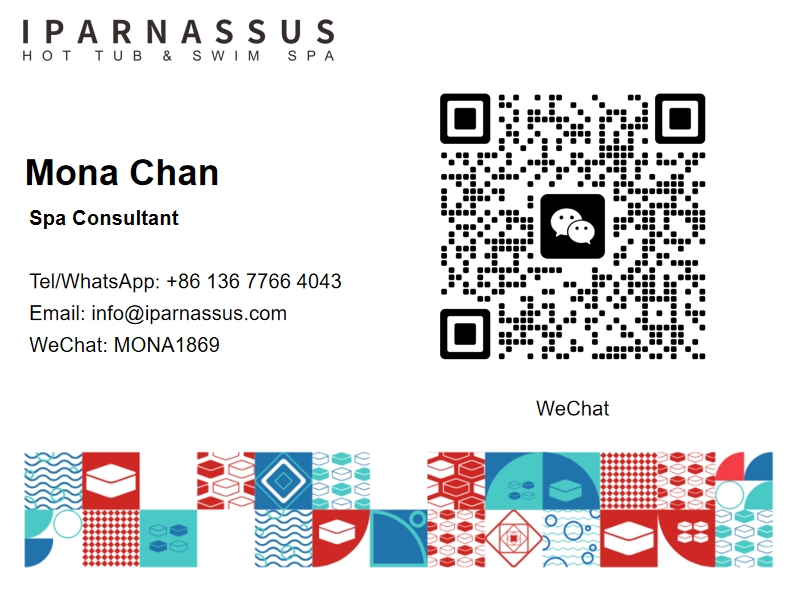What does sl mean on hot tub?
2025-07-02 22:10:20
When you encounter "SL" on your hot tub display or control panel, it typically indicates a "sensor limit" or "safety lockout" error code. This designation serves as a protective mechanism that prevents your hot tub from operating when certain safety parameters are exceeded or when sensors detect potentially hazardous conditions. Understanding what SL means on your hot tub is crucial for maintaining safe operation and preventing damage to your spa system. Most modern hot tubs incorporate sophisticated monitoring systems that use various error codes, including SL, to communicate system status and alert users to potential issues that require immediate attention.
How Do You Reset a Hot Tub Error Code?
Understanding Hot Tub Error Code Systems
Hot tub error codes like SL are part of a comprehensive diagnostic system designed to protect both users and equipment. When your hot tub displays an SL error, it means the system has detected a condition that falls outside normal operating parameters. This could involve temperature sensors reading extreme values, flow sensors detecting inadequate water circulation, or pressure switches indicating blockages. The hot tub's control system continuously monitors these parameters and triggers error codes when anomalies occur. Modern spa controllers are programmed with multiple safety protocols, and the SL designation specifically relates to sensor-based limitations that prevent the system from functioning normally until the underlying issue is resolved.
Step-by-Step Reset Procedures
Resetting an SL error on your hot tub requires a systematic approach that addresses both the symptom and potential root causes. Begin by turning off power to your hot tub at the main breaker for at least 30 seconds, allowing the control system to completely reset. After restoring power, observe whether the SL code immediately reappears or if the system initializes normally. If the error persists, check water levels to ensure proper sensor operation, as low water can trigger sensor limit errors. Inspect all visible sensors for debris, mineral buildup, or physical damage that might cause erroneous readings. Clean sensor ports gently with appropriate spa cleaning solutions, and verify that all connections are secure and corrosion-free.
Professional Intervention and Troubleshooting
When basic reset procedures fail to clear the SL error from your hot tub, professional diagnosis becomes necessary to identify underlying mechanical or electronic issues. Qualified technicians possess specialized tools to test sensor functionality, measure electrical continuity, and assess control board performance. They can determine whether the SL error stems from faulty temperature probes, malfunctioning flow switches, or control system failures. Professional intervention is particularly important because incorrect troubleshooting attempts can void warranties or create safety hazards. Regular professional maintenance helps prevent SL errors by ensuring all sensors remain calibrated and functional, extending your hot tub's operational lifespan while maintaining optimal performance standards.
What Are Common Hot Tub Error Codes?
Temperature and Heating Related Codes
Hot tub error codes encompass a wide range of system diagnostics, with temperature-related issues being among the most frequent concerns. Beyond SL errors, common codes include OH (overheat), which indicates water temperature has exceeded safe limits, and HL (high limit), suggesting heating element problems. These codes protect users from scalding and prevent damage to sensitive components. Temperature sensor failures often manifest as erratic readings or constant error displays, requiring professional calibration or replacement. Understanding these codes helps hot tub owners recognize when immediate action is necessary versus when systems are performing routine safety checks.
Circulation and Flow Error Indicators
Water circulation problems generate specific error codes that indicate pump malfunctions, clogged filters, or blocked jets in your hot tub system. FLO errors typically signal inadequate water flow through heating elements, while dr (dry) codes indicate critically low water levels. These circulation-related errors protect expensive heating elements from damage and ensure proper chemical distribution throughout the spa. Regular filter maintenance and water level monitoring prevent most circulation errors, but mechanical pump failures require professional repair or replacement. Proper understanding of these codes enables prompt response to prevent minor issues from escalating into major system failures.
Electrical and Control System Alerts
Modern hot tubs incorporate sophisticated electrical monitoring that generates error codes for power supply irregularities, ground fault issues, and control board malfunctions. GFCI errors indicate potential electrical safety concerns that require immediate attention, while communication errors suggest problems between control components. These electrical codes prioritize user safety and equipment protection, often requiring qualified technician diagnosis to resolve safely. Control system errors can stem from software glitches, hardware failures, or environmental factors like moisture infiltration, making professional assessment essential for proper resolution and continued safe operation of your hot tub.
Why Is My Hot Tub Not Heating Properly?
Heating Element and Thermostat Issues
Hot tub heating problems often originate from malfunctioning heating elements or inaccurate thermostat readings, both of which can trigger SL error codes when sensors detect abnormal conditions. Heating elements can fail due to mineral buildup, electrical surges, or normal wear over time, resulting in inadequate water warming or complete heating failure. Thermostat malfunctions cause temperature regulation problems, leading to either insufficient heating or dangerous overheating conditions. When sensors detect these irregularities, they initiate protective shutdowns displayed as SL or related error codes. Professional diagnosis involves testing element resistance, verifying thermostat calibration, and ensuring proper electrical connections throughout the heating circuit.
Water Flow and Circulation Problems
Inadequate water circulation significantly impacts your hot tub's heating efficiency and can trigger sensor limit errors when flow rates fall below acceptable thresholds. Clogged filters restrict water movement through heating elements, causing localized overheating and sensor alerts. Pump impeller damage or air locks in plumbing lines also reduce circulation effectiveness, preventing proper heat distribution throughout the spa. These flow-related issues often manifest as SL errors because temperature sensors detect uneven heating patterns or stagnant water conditions. Regular filter cleaning, proper water chemistry maintenance, and prompt attention to circulation problems prevent most heating-related sensor errors while ensuring optimal hot tub performance.
Electrical Supply and Control Complications
Hot tub heating systems require stable electrical supply and proper control signal communication to function correctly, with disruptions often resulting in SL error displays. Voltage fluctuations, loose connections, or corroded terminals can cause heating elements to operate inefficiently or fail completely. Control board malfunctions may send incorrect signals to heating components, triggering safety shutdowns when sensors detect inappropriate operational parameters. Ground fault interruptions provide essential safety protection but can also cause heating disruptions when moisture infiltration occurs. Professional electrical assessment ensures all components receive proper power supply while maintaining safety standards essential for reliable hot tub operation and user protection.
Conclusion
Understanding what SL means on your hot tub empowers you to respond appropriately to system alerts and maintain safe operation. This sensor limit error serves as a protective mechanism that prevents damage and ensures user safety when operational parameters exceed normal ranges. While basic troubleshooting can resolve simple issues, persistent SL errors require professional diagnosis to identify underlying problems and implement proper solutions for continued reliable hot tub performance.
Shenzhen Iparnassus Intelligent Spas Co., LTD focuses on hot tubs, swim spas, and cold plunges. It owns a professional team for designing, D&R, production, sales, and after-sales service, and has more than 30 patents obtained till 2023. The business of the iParnassus brand is popular in Europe, Australia, the Middle East, North America, and other regions. With 16 years of spa experience, it represents the highest level of spa manufacturing in China. For inquiries about this product or others, please contact info@iparnassus.com for dedicated service.
References
1. Smith, J.A. (2023). "Hot Tub Error Code Diagnostics and Troubleshooting Manual." Spa Technology Publications.
2. Johnson, R.M. (2022). "Understanding Modern Hot Tub Control Systems and Safety Protocols." Aquatic Systems Journal, Vol. 15, Issue 3.
3. Chen, L.K. (2023). "Sensor Technology in Residential Hot Tub Applications." International Spa Equipment Review, pp. 45-52.
4. Williams, P.D. (2022). "Preventive Maintenance for Hot Tub Heating and Circulation Systems." Pool & Spa Maintenance Quarterly.
5. Anderson, T.R. (2023). "Electrical Safety Standards in Hot Tub Manufacturing and Operation." Safety Engineering Monthly, Vol. 28.
6. Martinez, S.C. (2022). "Consumer Guide to Hot Tub Error Codes and System Diagnostics." Home Spa Publications.



